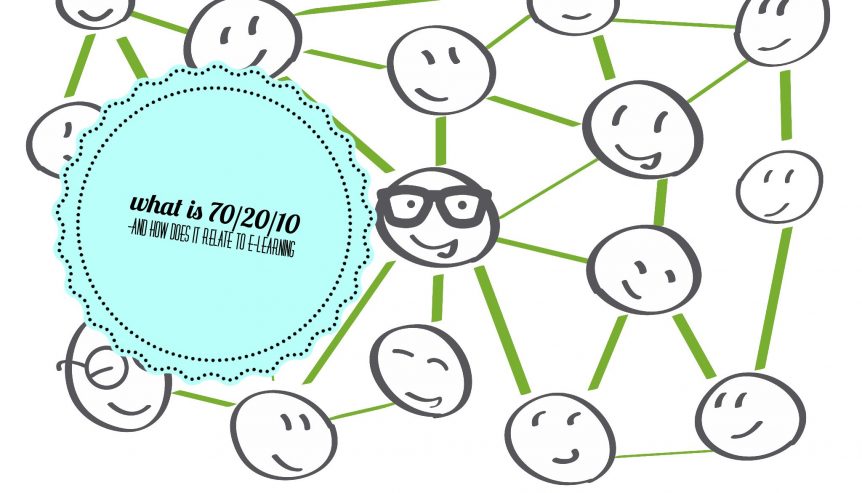What is 70/20/10 and How Does It Relate to E-Learning?
There are generally two ineffective ways to approach any learning theory or model. The first is to ignore and the second is to adopt without any scrutiny, expansion, or refinement. This applies to 70/20/10 as much as any other model or theory – you shouldn’t dismiss it but you shouldn’t implement in its raw form either, particularly given the advances in technology since it was first presented.
For the purposes of clarity, 70/20/10 is a learning model. As a model on its own, it is not without its flaws. The underlying theory is, however, sound, particularly when you relate and adapt it to e-learning.
What is the 70/20/10 Model?
Researchers from the non-profit organisation the Center for Creative Leadership developed the 70/20/10 model. They did so through a survey sent to around 200 business executives in the 1980s. The survey showed how the executives believed they learned throughout their careers. From the survey, the researchers presented the 70/20/10 model:
- 70 percent of learning is through experience
- 20 percent of learning is through social interactions
- 10 percent of learning is through formal training
Of course, the numbers are unusually perfect and the only people involved in the original survey were successful managers. In addition, there was no supporting data although some researchers have since attempted to give numerical weight to the 70/20/10 model.
While these are undoubtedly flaws, the theory does still have merit and, anecdotally, many people see truth in it. You only have to look at your own skills and knowledge – how much did you learn through real life experiences? If you’re like me, probably a lot.
Relating 70/20/10 to E-Learning
One issue with adopting the 70/20/10 model is that many apply it too rigidly. For example, using on-the-job training 70 percent of the time and mentoring 20 percent of the time, leaving just 10 percent for e-learning and/or classroom-based learning.
However, one of the key things the 70/20/10 model doesn’t take into account is the growing trend for informal learning. This is driven by the availability of the internet on all devices almost anywhere, as well as the advanced features available in e-learning courses.
Following on from the previous point, when the researchers carried out their survey, neither they nor the executives involved had any experience of e-learning as we know it today. Why is that important? It’s important because it’s now possible to use e-learning features to implement the theory behind each part of the 70/20/10 model.
In other words, you can use the 70/20/10 model to create better e-learning courses that improve learner outcomes.
70 Percent Through Experience
In many e-learning courses, it is possible to create real-life situations in a simulated environment. This enables learners to learn through experience.
In addition, e-learning improves on the old on-the-job model of learning as you can create a safe environment. For example, an employee learning on the job who presses the wrong button can disrupt an assembly line or knock an IT system offline. In a simulated e-learning environment, however, the learner can make mistakes and learn from them without impacting on the business.
20 Percent Through Social Interactions
It is possible to add mentorship features to an e-learning course by adding communication options, learner feedback, and tutor-led modules. In addition, there is no need for the mentor to be in the same office, country, or region.
It is also possible to add social elements to e-learning to encourage learners to interact with each other. This can also improve the learning experience.
10 Percent Through Formal Training
All e-learning courses will require elements of formal training whether it is text to read, videos to watch, or podcasts to listen to. It is important to note, however, that this type of content will only form part of a good e-learning course. This, however, is in tune with the low 10 percent figure in the 70/20/10 learning model.
Adapting 70/20/10 to Your Business
The 70/20/10 model of learning can help improve learning ROI in your business when you approach it with creativity and in the context of modern technology. This often involves using experienced designers and e-learning course developers to create the various elements, but the results are worth it.
